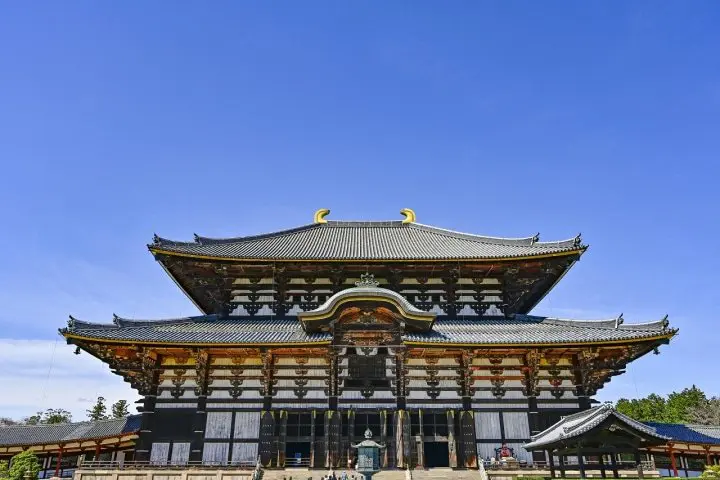9 World Heritage Sites in Japan Registered Between 1993 - 1998

There were 17 world heritage sites in Japan registered by 2014. We introduce the first nine of them; they include ancient temples in Nara and Kyoto, Itsukushima Shrine in Hiroshima, Himeji Castle, and other impressive sites.
By 2014, there were 13 cultural heritage sites and 4 natural heritage sites in Japan registered on the UNESCO heritage list. This article is the first installment from a pair of articles introducing Japan's heritage sites.
1. Buddhist Monuments in the Horyuji Temple Area - Nara

Photo by Pixta
Horyuji Temple was built in 607. This was the first world heritage site in Japan, registered in 1993. Hokiji, another temple built around that time was registered along with Horyuji. This is the oldest existing wooden building in the world and has attracted visitors since long ago.
2. Yakushima Island - Kagoshima

Photo by Pixta
Yakushima is a subtropical island in Kagoshima prefecture and it is well known for Yakusugi, a large cedar that is over one thousand years old! Surrounded by the beautiful blue sea, this island is covered in a vast, mysterious forest.
3. Himeji Castle - Hyogo

Himeiji Castle is located on a hill in Himeji, a city in Hyogo Prefecture. The structure is well known as the finest surviving example of prototypical Japanese castles. Its pure white walls have impressed visitors throughout Japan's history. The excellent defensive structure continues to protect the castle from the marks of time. With its beautiful surroundings, the castle is as charming as ever.
4. Shirakami-Sanchi Mountain Range - Aomori and Akita

Photo by Pixta
Shirakami-Sanchi is a majestic mountain area stretching from south Aomori to north Akita in the Tohoku region of Japan. Out of the entire area of 1,300 km², a tract covering 169.7 km² was registered as a World Heritage Site in 1993. There are beautiful ponds, swamps, and waterfalls in these mountains.
5. The Historic Monuments of Kyoto

Photo by Pixta
Kyoto was Japan's capital city and the site of the Imperial castle from 794 until 1868. (*The political capital moved to Kamakura between 1185-1333, and to Edo after 1603, but Japan's Emperor and the Imperiarial household were based in Kyoto between 794 and 1868.)
Ancient architecture still remains in Kyoto. Thirteen temples, three shrines, and the Nijo Castle are all registered as world heritage sites. In Kyoto, you will definitely feel the ancient atmosphere that accumulates a history of more than one thousand years.
6. The Historic Villages of Shirakawa-go and Gokayama - Gifu

Photo by Pixta
The remote villages of Shirakawa-go and Gokayama in the Hida mountain range were registered as cultural heritage sites in 1995. The Gassho-style houses have a differentr charm every season. The term 'Gassho-style' refers to houses that are built with a triangle-shaped roof.
7. The Hiroshima Peace Memorial - Hiroshima

Photo by Pixta
Hiroshima Peace Memorial, also known as Genbaku Dome, symbolizes the wishes for world peace and serves as a memorial for those who died in the atomic bombings of World War II. The site was formerly Hiroshima Prefectural Industrial Promotion Hall and was designated a World Heritage Site in 1996.
8. Itsukushima Shrine on Miyajima Island - Hiroshima

Photo by Pixta
Itsukushima Shrine is located on Miyajima Island in Hiroshima. It is famous for the torii gate that seems to float above the sea at high tide. It is said that the torii was erected so that the deities protect the island from floods and wars.
9. Historic Monuments of Ancient Nara

Photo by Pixta
Heijo-kyo, established in 710, was Japan's first capital and was located in present-day Nara. Five temples, one shrine, and the ruins of Heijo-kyo were all registered as World Heritage Sites in 1998.
Todaiji Temple, shown in the picture above, is one of the most famous temples in Japan and home to a large bronze statue of Buddha.
What do you think of the places registered from 1993 to 1999? We will introduce the World Heritage Sites in Japan registered from 1999 to 2013 in our following article.
Read also
Main image by Pixta
This is the official account of MATCHA's editorial department. Our articles feature useful travel information for visitors to Japan, from how-to guides to recommended places to visit.














































![[2026] Top 5 Strawberry Picking Spots in Tokushima, Naruto| Farms and Access Guide for January to May](https://resources.matcha-jp.com/resize/720x2000/2025/03/06-227165.webp)

